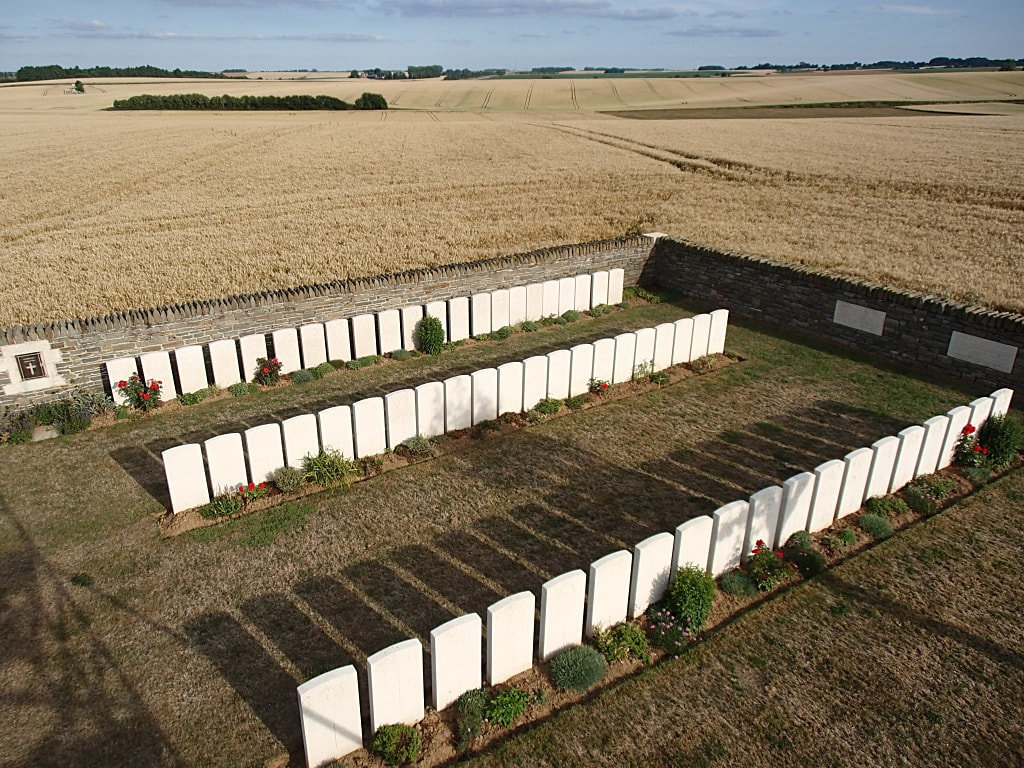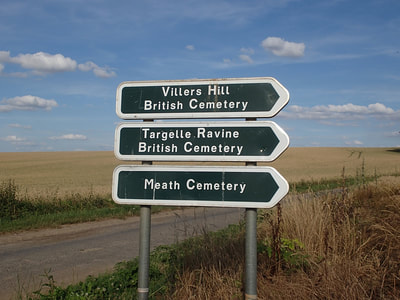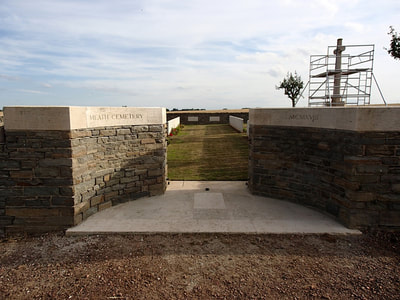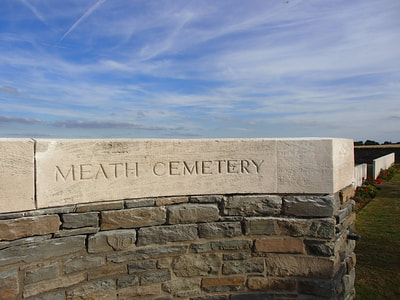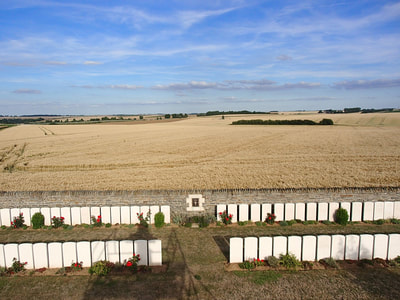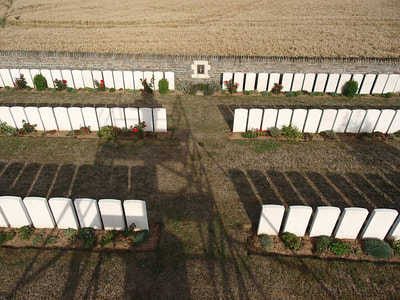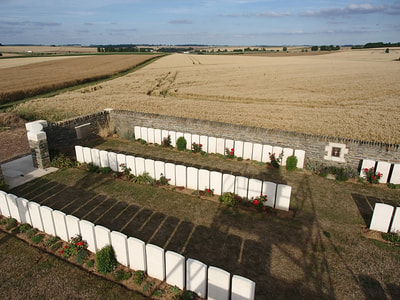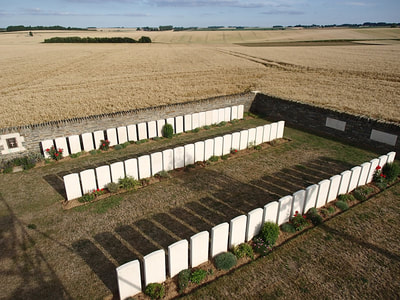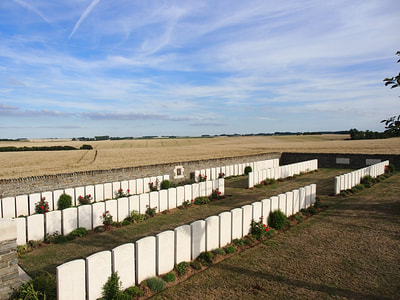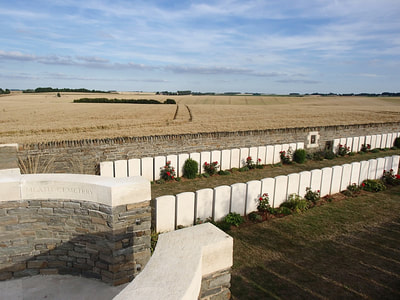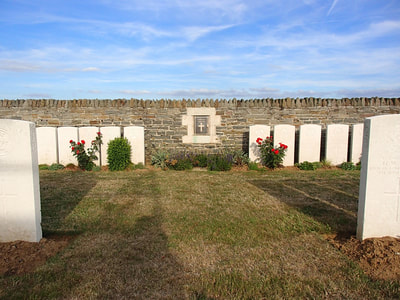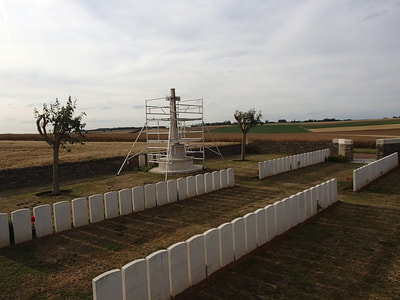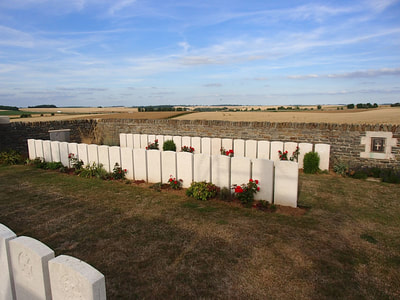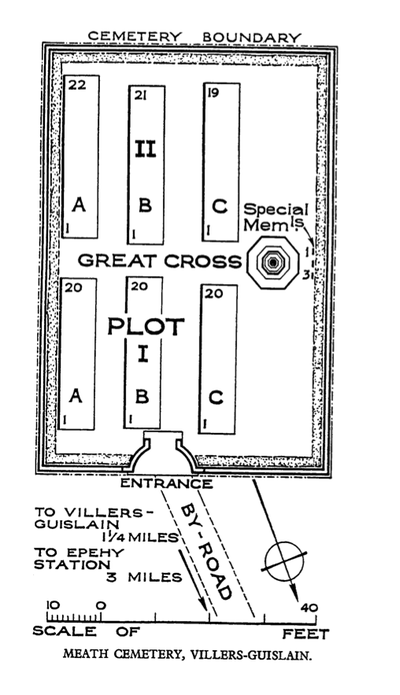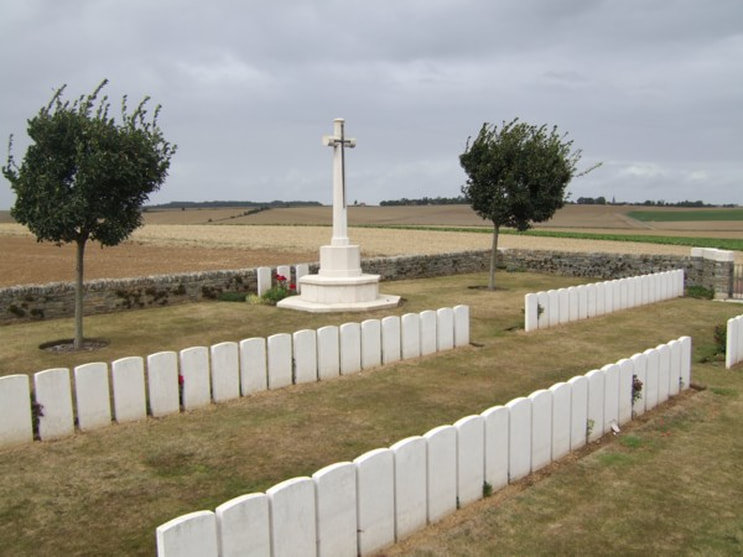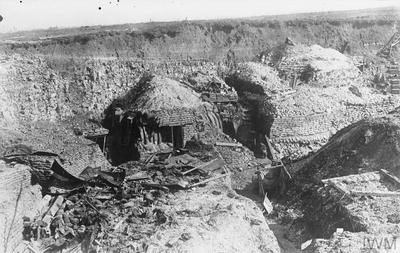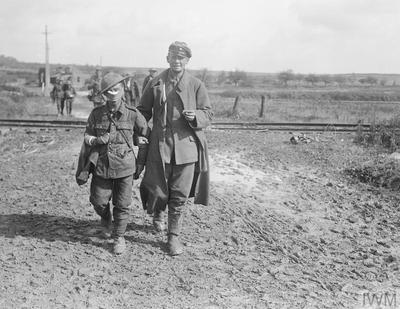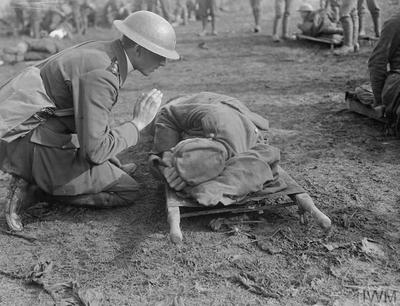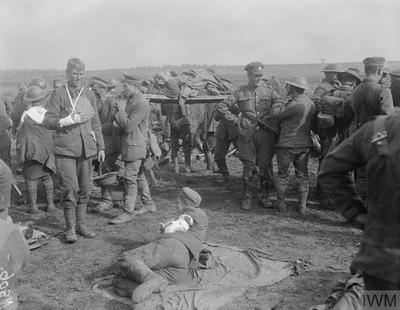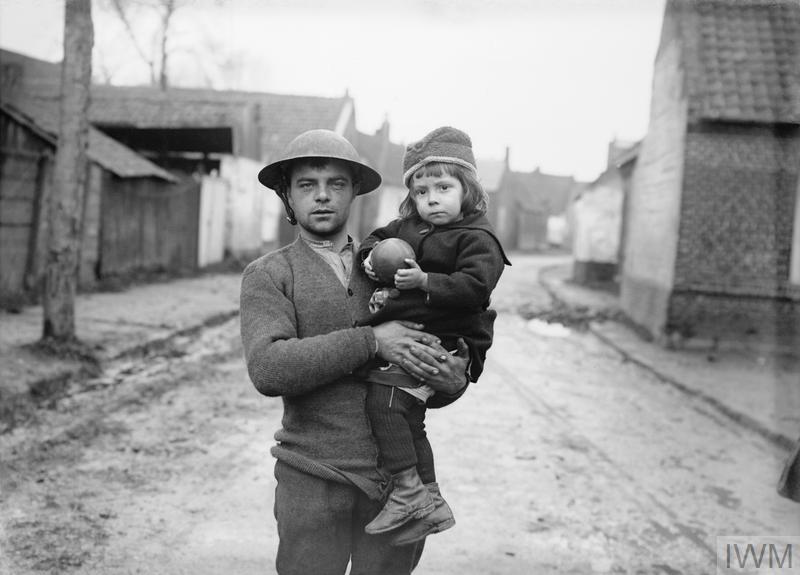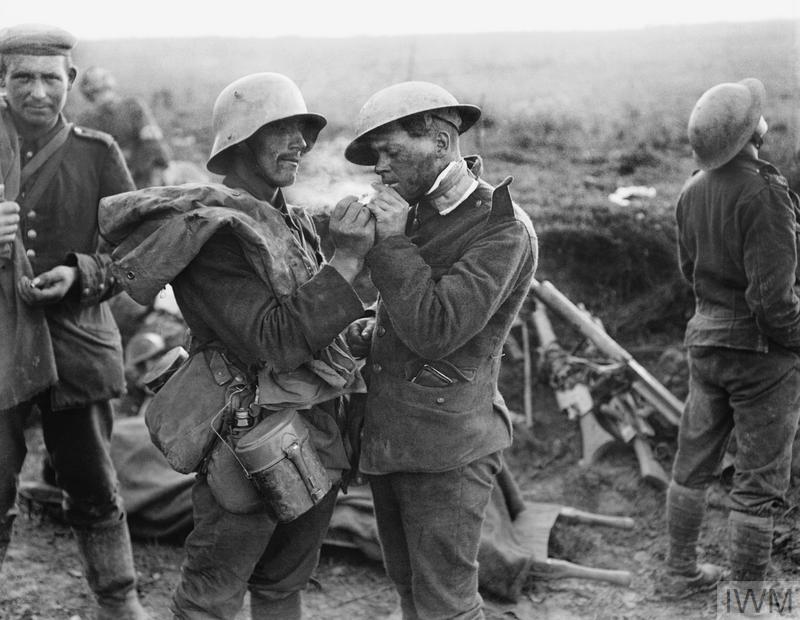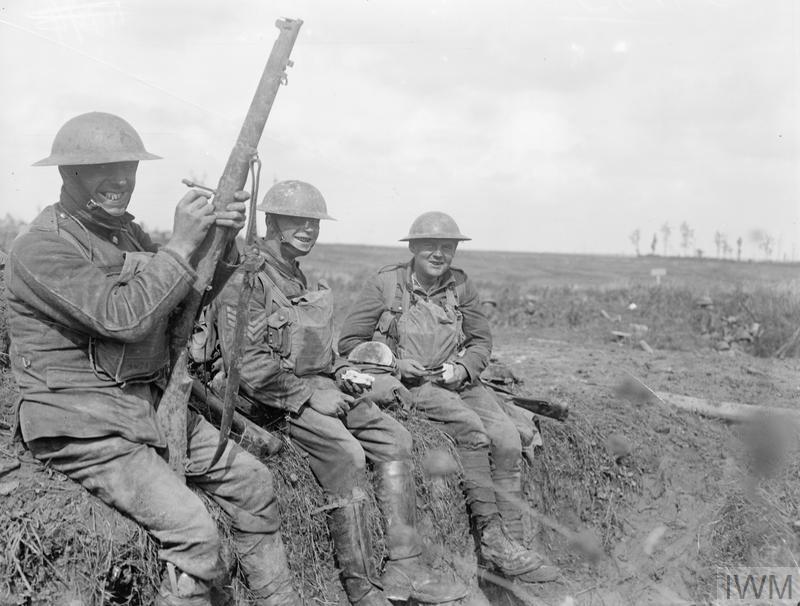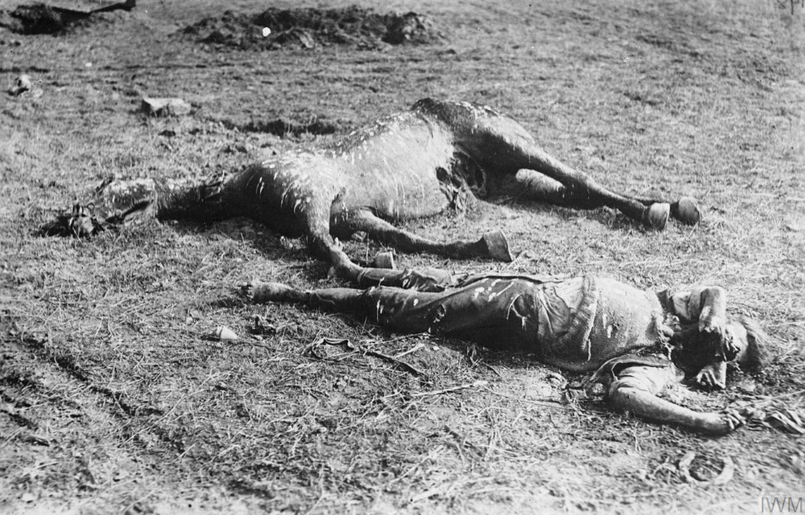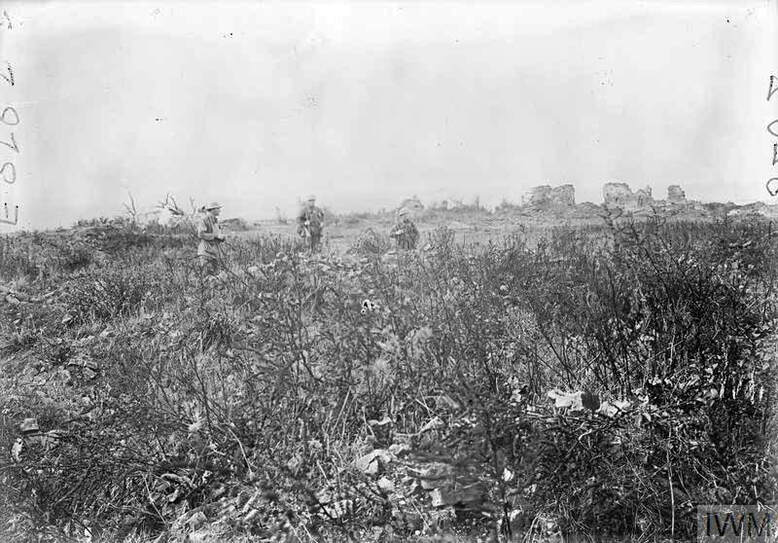MEATH CEMETERY
Villers-Guislain
Nord
France
GPS Coordinates - Latitude: 50.02199, Longitude: 3.15743
Location Information
Meath Cemetery is approximately 16 kilometres north-east of Peronne and 20 kilometres south-east of Cambrai.
Visiting Information
Please note, this cemetery is located 2 kilometres from the main road up a farm track, which can be difficult to drive along after wet or icy weather.
Historical Information
Villers-Guislain was occupied by Commonwealth forces from April 1917 until the German counter attacks (in the Battle of Cambrai) at the end of November 1917. It was lost on 30 November and retained by the Germans on 1 December in spite of the fierce attacks of the Guards Division and tanks. The village was finally abandoned by the Germans on 30 September 1918, after heavy fighting.
Meath Cemetery is due south of the village, in the fields between "Targelle Ravine" and "Pigeon Ravine". It was made by the 33rd Division Burial Officer in October 1918.
The cemetery contains 125 burials and commemorations of the First World War, the majority of whom belonged to the Cameronians, the Queen's Royal West Surreys and the London Regiment. 21 of the burials are unidentified but there are special memorials to three men of the 1st Cameronians known or believed to be buried among them.
Casualty Details: UK 125, Total Burials: 125.
The cemetery was designed by W H Cowlishaw
Meath Cemetery is approximately 16 kilometres north-east of Peronne and 20 kilometres south-east of Cambrai.
Visiting Information
Please note, this cemetery is located 2 kilometres from the main road up a farm track, which can be difficult to drive along after wet or icy weather.
Historical Information
Villers-Guislain was occupied by Commonwealth forces from April 1917 until the German counter attacks (in the Battle of Cambrai) at the end of November 1917. It was lost on 30 November and retained by the Germans on 1 December in spite of the fierce attacks of the Guards Division and tanks. The village was finally abandoned by the Germans on 30 September 1918, after heavy fighting.
Meath Cemetery is due south of the village, in the fields between "Targelle Ravine" and "Pigeon Ravine". It was made by the 33rd Division Burial Officer in October 1918.
The cemetery contains 125 burials and commemorations of the First World War, the majority of whom belonged to the Cameronians, the Queen's Royal West Surreys and the London Regiment. 21 of the burials are unidentified but there are special memorials to three men of the 1st Cameronians known or believed to be buried among them.
Casualty Details: UK 125, Total Burials: 125.
The cemetery was designed by W H Cowlishaw
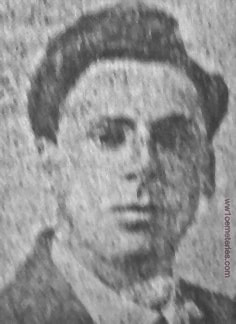
200267 Lance Corporal
Thomas Hodges Anderson
5th/6th Bn. Cameronians (Scottish Rifles)
21st September 1918, aged 23.
Plot II. A. 19.
Son of Hugh and Elizabeth Anderson, of 6, Braco St., St. George's Rd., Glasgow. Native of Saltcoats, Ayrshire.
His headstone bears the inscription; "With Christ Which Is Far Better."
Thomas Hodges Anderson
5th/6th Bn. Cameronians (Scottish Rifles)
21st September 1918, aged 23.
Plot II. A. 19.
Son of Hugh and Elizabeth Anderson, of 6, Braco St., St. George's Rd., Glasgow. Native of Saltcoats, Ayrshire.
His headstone bears the inscription; "With Christ Which Is Far Better."
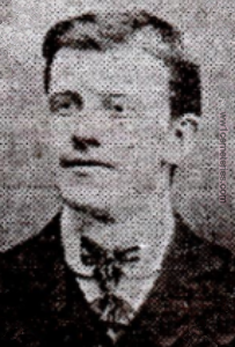
26467 Private
John Robertson Annand
1st Bn. Cameronians (Scottish Rifles)
21st September 1918.
Plot I. A. 11.
Husband of Mrs. M. S. Annand, of 29, Rose St., Dundee.
John Robertson Annand
1st Bn. Cameronians (Scottish Rifles)
21st September 1918.
Plot I. A. 11.
Husband of Mrs. M. S. Annand, of 29, Rose St., Dundee.
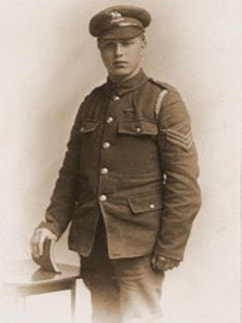
G/3724 Serjeant
Herbert E. Randall, D. C. M.
1st Bn. The Queen's (Royal West Surrey Regiment)
21st September 1918, aged 20.
Plot II. B. 5.
Son of Mr. and Mrs. J. A. Randall, of Crocken Hill, Swanley, Kent.
His headstone bears the inscription; "He Died That We Might Live."
His Majesty the King has been graciously pleased to approve of the award of the Distinguished Conduct Medal to the undermentioned:
G/3724 Sjt. H. E. Randall, R. W .Surr. R. (Swanley)
"For conspicuous gallantry and devotion to duty. On hearing cries for help coming from a detached post, he, heedless of the very hostile shelling, went to the spot and found a N.C.O. and two men buried under some debris. Returning for assistance, he, with two men, who volunteered to aid him succeeded in extricating the buried men under the most dangerous and difficult circumstances. This gallant act occupied an hour under heavy fire in the open, undoubtedly saved the lives of the three men."
Herbert E. Randall, D. C. M.
1st Bn. The Queen's (Royal West Surrey Regiment)
21st September 1918, aged 20.
Plot II. B. 5.
Son of Mr. and Mrs. J. A. Randall, of Crocken Hill, Swanley, Kent.
His headstone bears the inscription; "He Died That We Might Live."
His Majesty the King has been graciously pleased to approve of the award of the Distinguished Conduct Medal to the undermentioned:
G/3724 Sjt. H. E. Randall, R. W .Surr. R. (Swanley)
"For conspicuous gallantry and devotion to duty. On hearing cries for help coming from a detached post, he, heedless of the very hostile shelling, went to the spot and found a N.C.O. and two men buried under some debris. Returning for assistance, he, with two men, who volunteered to aid him succeeded in extricating the buried men under the most dangerous and difficult circumstances. This gallant act occupied an hour under heavy fire in the open, undoubtedly saved the lives of the three men."
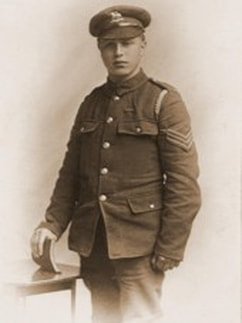
G/3724 Serjeant
Herbert E. Randall, D. C. M.
1st Bn. The Queen's (Royal West Surrey Regiment)
21st September 1918, aged 20.
Plot II. B. 5.
Son of Mr. and Mrs. J. A. Randall, of Crocken Hill, Swanley, Kent.
His headstone bears the inscription; "He Died That We Might Live."
His Majesty the King has been graciously pleased to approve of the award of the Distinguished Conduct Medal to the undermentioned:
G/3724 Sjt. H. E. Randall, R. W .Surr. R. (Swanley)
"For conspicuous gallantry and devotion to duty. On hearing cries for help coming from a detached post, he, heedless of the very hostile shelling, went to the spot and found a N.C.O. and two men buried under some debris. Returning for assistance, he, with two men, who volunteered to aid him succeeded in extricating the buried men under the most dangerous and difficult circumstances. This gallant act occupied an hour under heavy fire in the open, undoubtedly saved the lives of the three men."
Herbert E. Randall, D. C. M.
1st Bn. The Queen's (Royal West Surrey Regiment)
21st September 1918, aged 20.
Plot II. B. 5.
Son of Mr. and Mrs. J. A. Randall, of Crocken Hill, Swanley, Kent.
His headstone bears the inscription; "He Died That We Might Live."
His Majesty the King has been graciously pleased to approve of the award of the Distinguished Conduct Medal to the undermentioned:
G/3724 Sjt. H. E. Randall, R. W .Surr. R. (Swanley)
"For conspicuous gallantry and devotion to duty. On hearing cries for help coming from a detached post, he, heedless of the very hostile shelling, went to the spot and found a N.C.O. and two men buried under some debris. Returning for assistance, he, with two men, who volunteered to aid him succeeded in extricating the buried men under the most dangerous and difficult circumstances. This gallant act occupied an hour under heavy fire in the open, undoubtedly saved the lives of the three men."
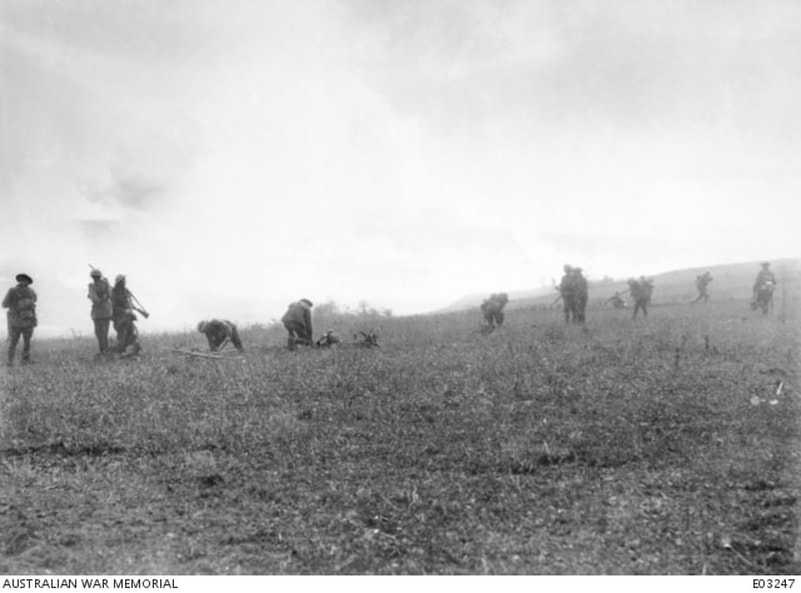
18th September 1918; The 45th Australian Battalion digging in under a smoke barrage near Ascension Farm on the second objective in the attack made by the 1st and 4th Australian Divisions and British Divisions upon the old British trench lines near Hargicourt and the outpost line of the Hindenburg system. The Hindenburg Outpost Line (the third and final objective in this battle) was about a mile distant at this point. This fight was part of what is known by the British as the 'Battle of Epehy', being a phase of the `Battles of the Hindenburg Line'. Identified are: Private R. J. Martin (fourth from the left), and Lance Corporal W. R. Thomson (fifth from the left).

